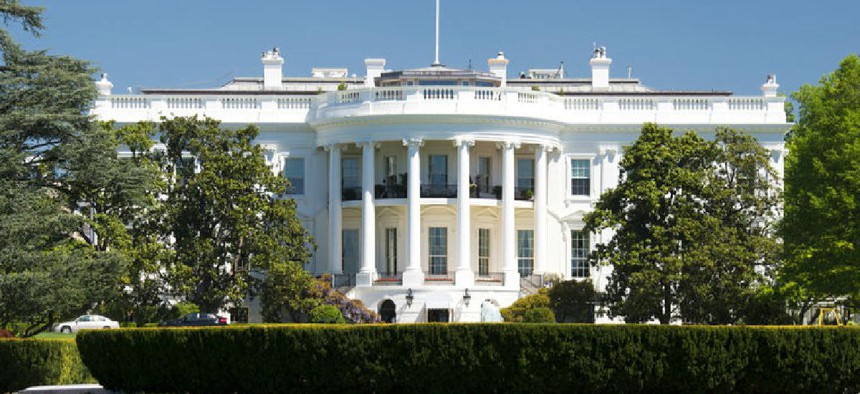White House proposes wide-ranging government reorg

A White House plan to reorganize and consolidate agencies across government includes changes to federal employee services and customer experience.

The White House's wide-ranging plan to reorganize and consolidate agencies across government could spell major changes to federal employee services and customer experience.
"This effort, along with the recent executive orders on federal unions, are the biggest pieces so far of our plan to drain the swamp," said White House budget director Mick Mulvaney.
The plan's headlines include a major reorganization of cabinet agencies, including a proposal to consolidate the Departments of Education and Labor. The administration is also proposing moving the $70 billion Supplemental Nutrition Assistance Program from the Department of Agriculture to the Department of Health and Human Services, which under the plan will be renamed as Department of Health and Public Welfare.
The reorganization, spurred by an executive order in March 2017, would hollow out many of the functions of the Office of Personnel Management.
OPM, created as an independent agency under the Civil Service Reform Act of 1978, would see its human resources policy functions transferred under the Executive Office of the President.
"The civil service system is overdue for an overhaul, and that overhaul would best be implemented under a new management structure that is more focused on core priorities and that has not been molded around the existing, archaic framework of civil service rules and regulations," the reorganization document states.
The document also states the transition into the White House would be less expensive than the current structure.
In addition to employee services reorganization to the White House, the personnel agency would see its retirement services, federal employees’ healthcare and insurance program, as well as its human resources solutions reassigned under a new entity, combined with existing office of the General Services Administration.
Another main function of the agency, background checks conducted by the National Background Investigations Bureau, would be transferred to the Department of Defense.
"While these functions are vital, their scope and scale are such that they necessarily distract agency leadership's attention from strategic human capital management and stewardship of an efficient civil service structure," the reorganization document states.
The placement of OPM's remaining functions — namely, the merit system accountability and compliance plus the suitability executive agent — "will be determined at a later date," the proposal states.
The restructuring of OPM and other big changes suggested in the report require congressional approval.
"I'm grateful that the Trump administration is willing to explore big solutions and start a conversation about tough problems that face our system of government," said Sen. James Lankford (R-Okla.), who leads a key government operations subcommittee. "Congress should welcome this debate on a wide-range of issues to address the logical changes that need to happen to every agency.”
Rep. Gerry Connolly (D-Va.) who represents thousands of federal employees in his metropolitan D.C.-area district, came out strongly against the reorganization, including the plan to break up OPM.
Connolly characterized the plan as "a wish list for anti-government ideologues not based in fact or study." The plan he added, "would shift essential services out of OPM, including retirement benefit services and FEHBP implementation, at precisely the wrong time."
Customer experience
The plan also looks to expand the online customer experience work done by U.S. Digital Services and the General Services Administration's digital services groups.
Office of Management and Budget Deputy Director for Management Margaret Weichert said, "Our current Government bureaucracy is not keeping pace in the digital age," and the reform plan would "streamline agencies, remove duplication, and alleviate burden for all Americans."
The proposal tasks agencies to "conduct research to identify the most significant opportunities for customer-centric change" based on common customer's "journey maps" of service experience across agencies, then to develop plans to improve customer services.
"One particular area of focus," the reorganization plan states, "would likely be the creation of user-focused digital front doors – rebuilding government web properties to focus less on government structure and more on user experience."
The proposal would also create the Government Effectiveness Advanced Research Center, a public-private partnership of industry, academics and researchers to improve government service delivery.
The plan also reiterates the importance of getting cybersecurity talent into government, advancing recent moves to strengthen the cybersecurity workforce.
Max Stier, president of the Partnership for Public Service, made the point that while government needs reform, "structural reorganizations are rarely the most effective way to improve service to our citizens."
NEXT STORY: Senate panel advances pay raise for feds


